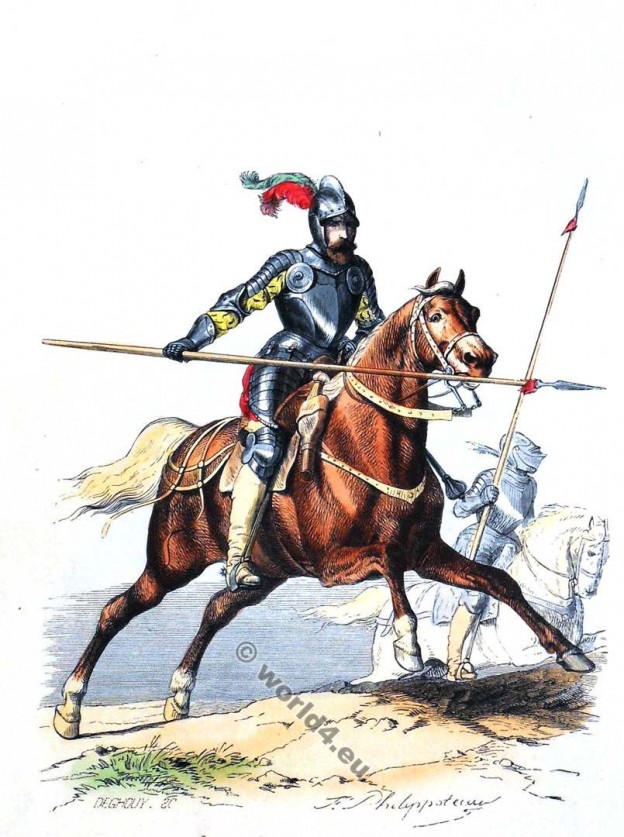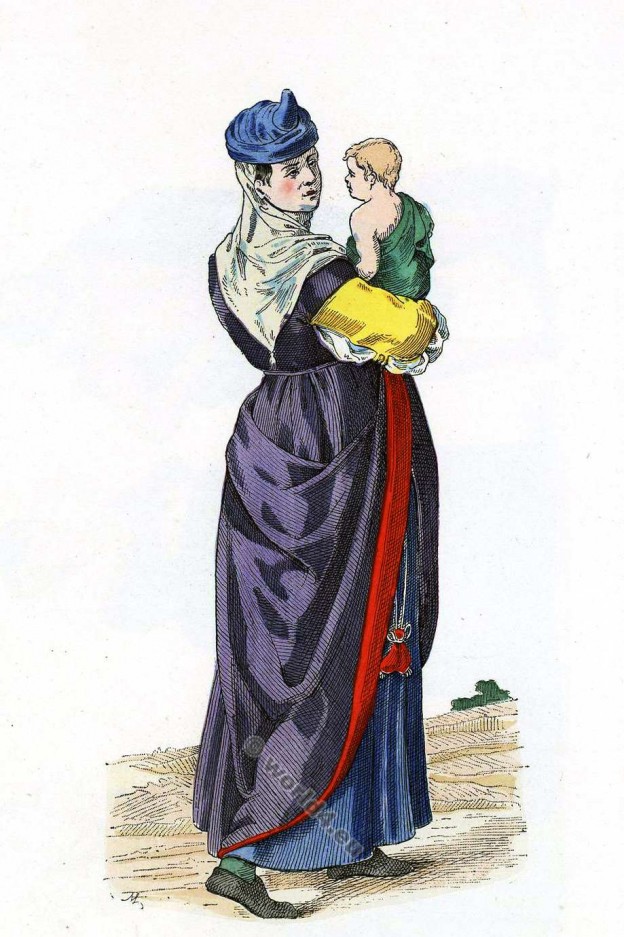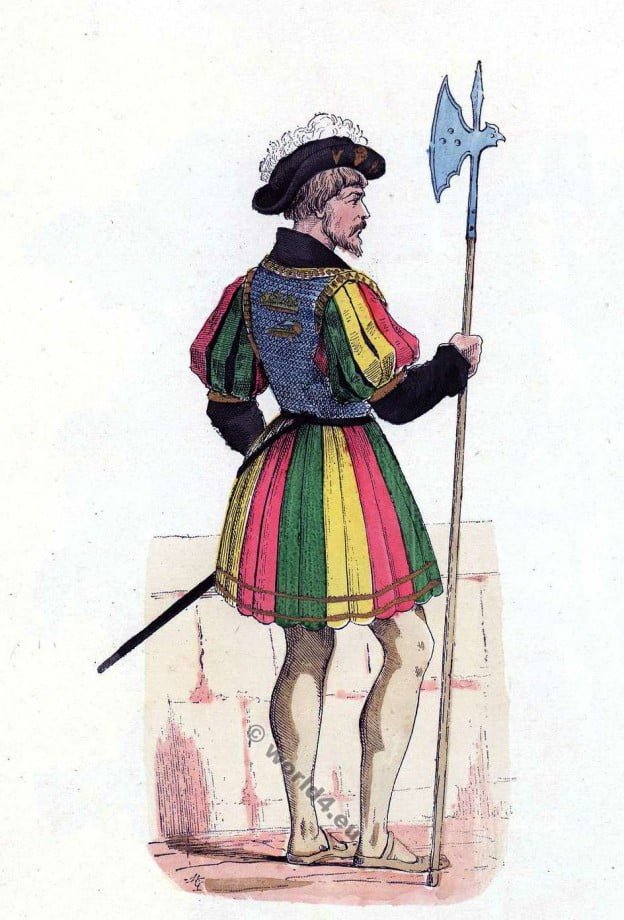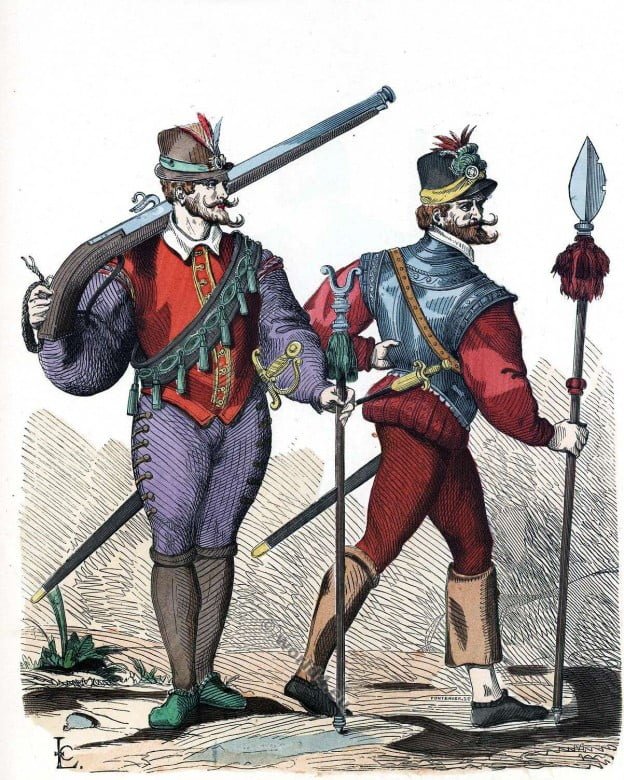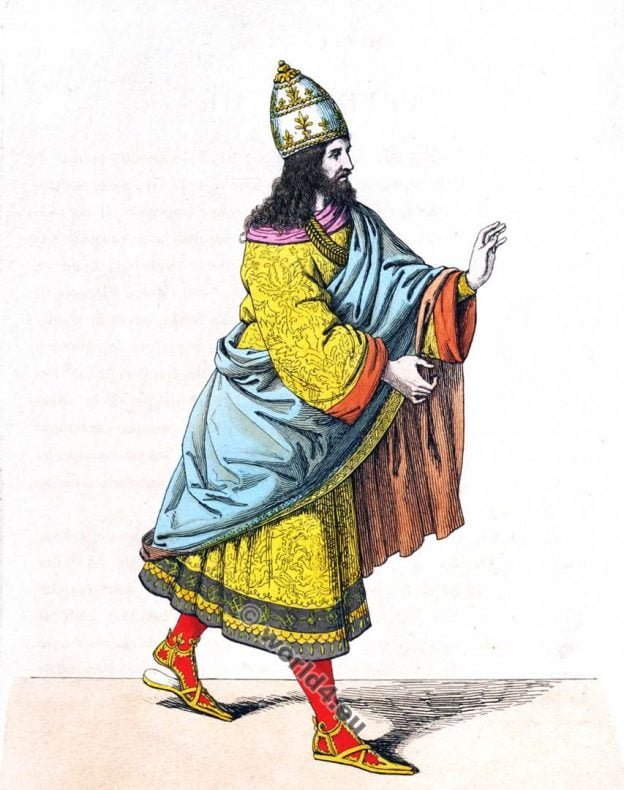Chevau-légers. The Guard troops of the Ancien Régime. The king’s guard. Sergeant in armor. 1560 to 1600.
Tag: Renaissance fashion era
Fashion and costume illustrations of the Renaissance. Restored from various, rare sources. Renaissance (French for “rebirth”) describes a European cultural epoch mainly 15th and 16th century. The end of the era takes place in the early 17th century in Italy by the newly prominent baroque style.
Vêtements d’une femme de Bayonne. 16ème siècle.
Historical clothing of a woman of Bayonne. Region Aquitaine. 16th century.
Gentilhomme de la cour de François 1er. 16ème siècle.
Renaissance costume of a Gentleman of the court of Francis I. 16th century. Costumes civils et militaires des Français à travers les siècles.
The assassination of David Riccio, favourite of Mary Stuart in 1566.
Riccio was an Italian lute player and composer, as well as private secretary and favorite of Mary Stuart.
Garde du corps de François Ier. 16ème siècle. Renaissance.
Bodyguard of French king Francis I. 1515 to 1545. According to a miniature of the time by Gaignièrs.
French Musketeer and infantry officer in the 16th century. Renaissance.
Musketeer and infantry officer in the 16th century. According to Willemin’s book.
French huntsman of the 16th century. Veneur au 16ème siècle.
Civil and military costumes of the French. Huntsman in the 16th century. Veneur au 16ème siècle.
Frederick III. Emperor of the Holy Roman Empire.
Friedrich III. 1415 -1493, from the house of Habsburg was from 1440 Roman-German king and from 1452 Emperor of the Holy Roman Empire.
Baroness during the reign of Francis I, 16th century.
Baroness during the reign of Francis I, 16th century. Renaissance fashion era.
Duc of the Court of Francis I, 1530. Fashion of the Renaissance.
Duc de la cour de François Ier, 1530. Illustration de 1861 par Compte-Calix (1813-1880) Musée cosmopolite.

